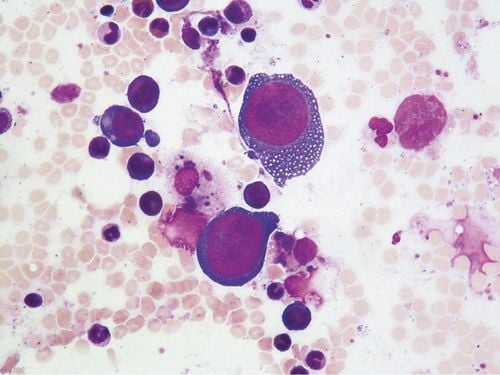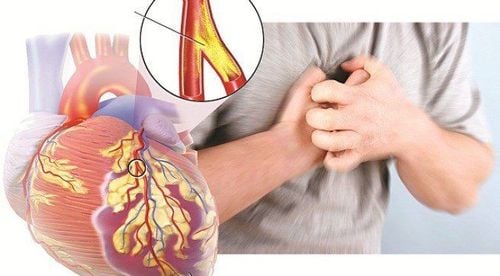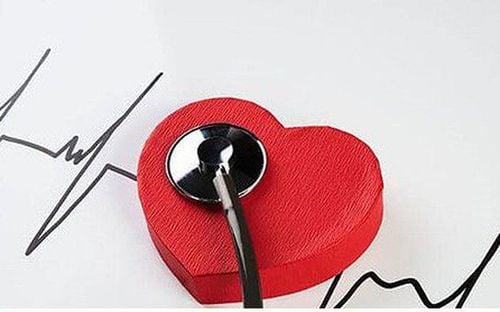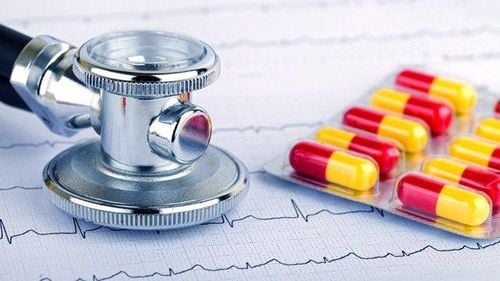This is an automatically translated article.
The article is professionally consulted by Specialist Doctor II Nguyen Quoc Viet - Department of Medical Examination & Internal Medicine - Vinmec Danang International General Hospital.
Myocarditis is one of the most dangerous heart diseases. This is a phenomenon where the heart muscle cells are damaged by many different agents leading to inflammation and necrosis of the heart muscle cells.
1. What is myocarditis?
Myocarditis is an inflammation of the thick muscular layer of the heart wall, causing the myocardium to become inflamed and necrotic, affecting the contractile function of the heart muscle. Myocarditis, if not detected and treated early, can cause many dangerous complications, leading to rapid and life-threatening heart failure.Myocarditis can manifest in a variety of symptoms and degrees, ranging from mild, vague symptoms to very severe, cardiogenic shock and death. It is also the cause of dilated cardiomyopathy with chronic heart failure.
2. The danger of myocarditis

Bệnh viêm cơ tim rất nguy hiểm
Acute myocarditis usually occurs in young people between 20 and 40 years old. Common in the rainy season when the weather changes seasons.
This is a disease with a sudden, complicated development, a high risk of death if not treated early and promptly. The initial signs of the disease are difficult to detect because the clinical symptoms are atypical, similar to those of a common cold such as fatigue, body aches, loss of appetite, etc., more often seen in young people, so it is easier subjective, disregard.
Acute myocarditis after only a few days has caused dangerous complications such as pneumonia, arrhythmia, respiratory failure, heart failure. Therefore, if you have a fever and are accompanied by other unusual symptoms: chest tightness, shortness of breath, rapid heart rate, etc., the patient should immediately go to a medical facility for timely detection and treatment.
In case of severe myocarditis, it can lead to:
Syncope, sudden death. Cardiac arrhythmia: Extrasystoles, conduction block, tachycardia... Very severe, life-threatening: heart failure due to myocarditis requiring artificial heart or heart transplant. Long-term prognosis: can lead to dilated cardiomyopathy, severe heart failure.
3. Causes of myocarditis
The cause of myocarditis is mainly viral, of which the most common is coxsackie virus B. Some other viruses such as common cold virus (adenovirus), parvovirus B19 (typhus virus), virus herpes (which causes chickenpox, shingles), echovirus (which causes gastrointestinal infections), or rubella virus (which causes measles) are also potential causes of myocarditis.In addition, myocarditis can also be caused by bacteria and parasites; due to exposure to allergenic, toxic, antiepileptic drugs; due to chemotherapy or radiation therapy; have lupus , arteritis...
4. Signs and diagnosis of myocarditis
4.1 Common signs of myocarditis
Mild myocarditis usually has no noticeable symptoms. Patients may feel sick, tired and have general body symptoms when infected with the virus, then go away on their own without even realizing they have myocarditis.In severe cases of inflammation, the person may experience many different symptoms and signs depending on the cause, including:
- Chest tightness
- Abnormally fast heartbeat
- Shortness of breath even when sitting at rest or during exercise
- Edema (fluid retention) in the legs, swollen ankles and feet
- Feeling tired
- Other signs and symptoms such as headache, body aches , joint pain, fever, sore throat and diarrhea.
Myocarditis in children is often an acute inflammatory heart disease with more pronounced and rapidly progressive symptoms including: Fever, fainting, shortness of breath, rapid breathing, and abnormally fast heart rate.
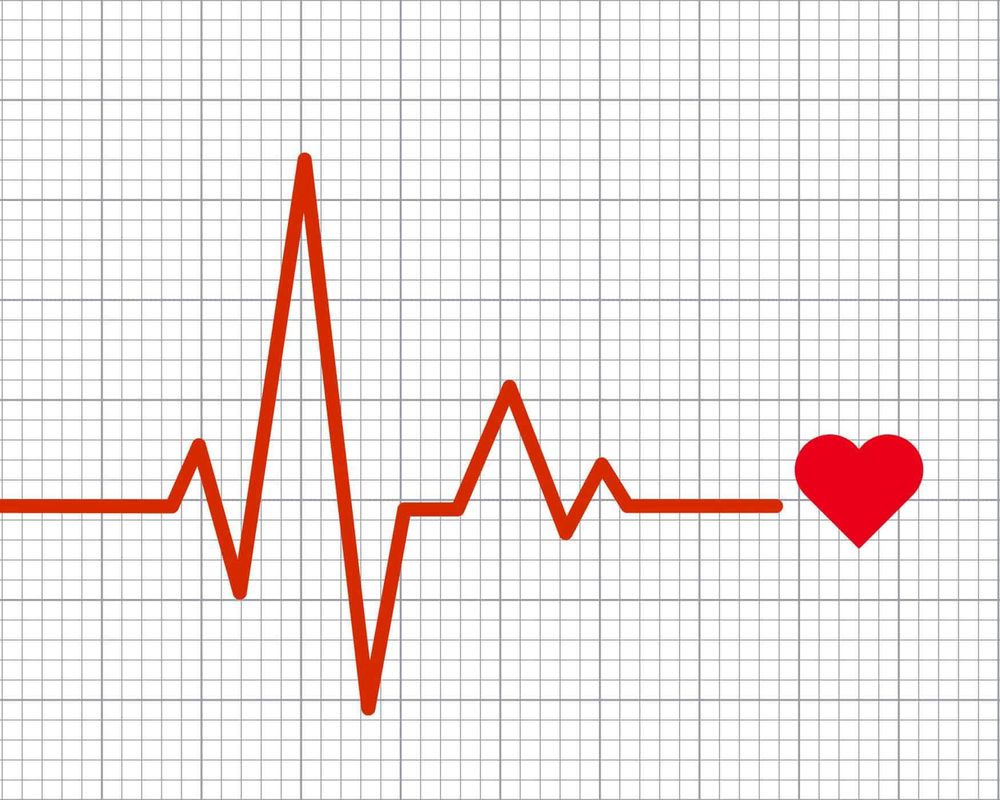
Tiếng tim mờ là triệu chứng xuất hiện sớm và có giá trị trong chẩn đoán
3.2 Subclinical
Erythrocyte sedimentation rate is one of the tests that detect an inflammatory response that may be elevated in myocarditis. However, the erythrocyte sedimentation rate can be elevated in many other inflammatory and non-inflammatory conditions. This is a non-specific test. Cardiac enzymes such as creatine phosphokinase, lactate dehydrogenase, troponine T, CK-MB, SGOT (AST), SGPT (ALT) may be elevated in acute and chronic myocarditis. However, if these enzymes are negative, myocarditis is not ruled out. Polymerase Chain Reaction (PCR) can detect viral genomes in cardiomyocytes but not in peripheral blood. This technique identifies the type of virus that causes the disease. Echocardiography revealed markedly decreased contractile function of the myocardium and often present with pericardial effusion, mitral regurgitation, and absence of coronary artery lesions or other congenital abnormalities. Myocarditis can be detected by endocardial biopsy. This technique is usually performed with cardiac catheterization. Endocardial biopsy reveals other causes of cardiomyopathy such as hoarding disease, mitochondrial defects. Electrocardiogram: Electrocardiographic changes may include: Atrioventricular conduction disturbances, first, second, and third degree atrioventricular block or disturbances of intraventricular conduction (His bundle branch block). Cardiac Arrhythmias, However, the most common abnormality seen in myocarditis is sinus tachycardia with nonspecific ST segment and T wave changes. Cardiac X-ray: Cardiac enlargement and very rapid enlargement . Manifestations of circulatory stasis in the lungs. After treatment, the electrocardiogram returned to normal. Differential diagnosis Some diseases that present with acute myocarditis are carnitine deficiency, hereditary mitochondrial defects, idiopathic dilated cardiomyopathy, pericarditis, endocardial elastic fibrosis, other abnormalities. usually coronary arteries.Therefore, the doctor advises that when the patient has symptoms of acute myocarditis, they should go to the hospital for early medical examination, not subjectively buy self-treatment. When visiting the hospital, doctors will measure electrocardiogram, echocardiogram in combination with clinical symptoms, diagnose early, and promptly treat patients.







